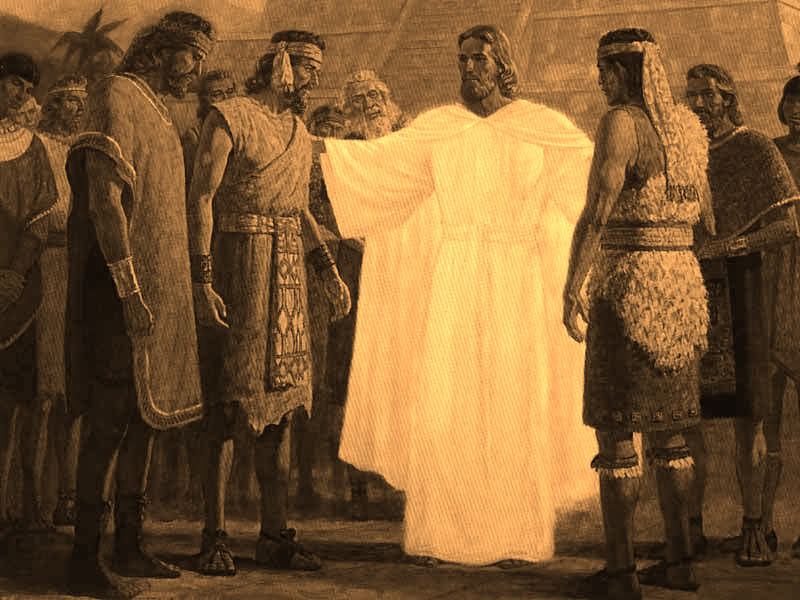Question
Gramps,
I was wondering how old Mary was when she gave birth to Jesus. I know that she was a young woman but my dad and I would like to know if it says anywhere how old she was.
Teleah
Answer
Dear Teleah,
Mary was probably somewhere between 12 and 14 when she gave birth to Jesus.
Our scriptures are silent on her age, but other sources relate stories of Mary’s childhood and betrothal to Joseph. One of these, The Gospel of Pseudo-Matthew (also called The Gospel of the Nativity of Mary) does not exist today. What we have is a Latin translation (attributed to Jerome (347-420 AD)) of a Hebrew text (attributed to Matthew). The trail is shaky, so generous scholars declare it to be a 4th century work. This text states that Mary was betrothed to Joseph while she was in “her fourteenth year” which places her at 13 (compare Joseph Smith’s First Vision in his “fifteenth year” where he is 14 years old), although I have seen some translations state she was 14.
An earlier source that provides an age is The Protovangelion of James (also called The Infancy Gospel of James). The earliest manuscript dates to the 3rd century, but textual analysis has placed the origin to mid- to late-2nd century AD (for comparison, the canonized infancy gospels date to 80-130 AD (Luke) and 80-100 AD (Matthew)). This text states that Mary was 12 when she was betrothed. As with Pseudo-Matthew, it places her in the temple, dedicated to the Lord, living there in the style of Samuel. She has to get married off because the priests are concerned “lest the holy place of the Lord our God be defiled” (8:3) with the onset of puberty (recall that the Law of Holiness required purification after giving birth (Leviticus 12:6 and Luke 2:22) and for menstruation (Lev. 15:19-30)).
This age narrative matches what we know of the period culture. Such engagements typically occurred when a woman was in her early teens (see Jesus Christ and the World of the New Testament, by Holzapfel, Huntsman and Wayment, p. 137; and The Life and Teachings of Jesus Christ, in Richard Holzapfel, ed., p. 108). Geike paints for us the two variations of the betrothal ceremony that Joseph and Mary would have performed.
“The betrothal was formally made with rejoicings in the house of the bride under a tent or slight canopy raised for the purpose. It was called the ‘making sacred’ as the bride thenceforth was sacred to her husband in the strictest sense. To make it legal, the bridegroom gave his betrothed a piece of money, or the worth of it, before witnesses, with the words, ‘Lo, thou art betrothed unto me,’ or by a formal writing in which similar words and the maiden’s name were given, and this in the same way was handed to her before witnesses” (Life and Words of Christ, vol. 1, page 99).
Edersheim adds the concluding blessing and the status of the betrothed:
“[T]he whole being perhaps concluded by a benediction over the statutory cup of wine, which was tasted in turn by the betrothed. From that moment Mary was the betrothed wife of Joseph; their relationship as sacred, as if they had already been wedded. Any breach of it would be treated as adultery; nor could the band be dissolved except, as after marriage, by regular divorce” (The Life and Times of Jesus the Messiah, vol. 2, page 106).
We can then understand the shock when Joseph discovers his almost-wife is pregnant! The canonical account informs us that a divine manifestation assured Joseph that these events were sanctioned by God (Matthew 1:19-23). The apocryphal accounts mentioned above also deal with the fallout of the scandal that follows when an engaged couple are suddenly found to be pregnant before the marriage was publicly ratified. Mary and Joseph return to the temple to meet the accusation of a secret elopement (and possible adultery on Mary’s part). Participating in the ritual trial prescribed by God (Numbers 5:11-31) both Joseph and Mary were found blameless (Protovangelion 16). Like Joseph and Mary themselves, the community before whom they were betrothed also received a divine witness that the Lord found no fault in this couple.
Joseph then proceeded to formally take Mary as his young wife (either before or after Christ’s nativity, depending on your preference of Matt. 1:24-25 versus Luke 2:5). The betrothal period did not typically last for longer than a year for maidens (Edersheim, vol. 3, page 245), so Mary was probably no more than 15 at this point. Once again we turn to Edersheim to paint a scene.
“On the evening of the actual marriage, the bride was led from her paternal home to that of her husband. First came the merry sounds of music; then they who distributed among the people wine and oil, and nuts among the children; next the bride, covered with the bridal veil, her long hair flowing, surrounded by her companinos, and led by ‘the friends of the bridegroom’;, and ‘the children of the bridechamber.’ … Arrived at her new home, she was led to her husband. Some such formula as ‘Take her according to the Law of Moses and of Israel’ would be spoken, and the bride and bridegroom crowned with garlands. Then a formal legal instrument, called the Kethubah, was signed, which set forth [the legal obligations the husband has for his wife]. Then, after the prescribed washing of hands and benediction, the marriage-supper began — the cup being filled, and the solemn prayer of bridal benediction spoken over it. And so the feast lasts — it might be more than one day — … till at last ‘the friends of the bridegroom’ led the bridal pair to the Cheder and the Chuppah, or the bridal chamber and bed” (vol. 3, page 245).
Following Matthew’s account, at the end of these festivities, an exhausted but joyful Joseph and Mary simply went to sleep.
Gramps







